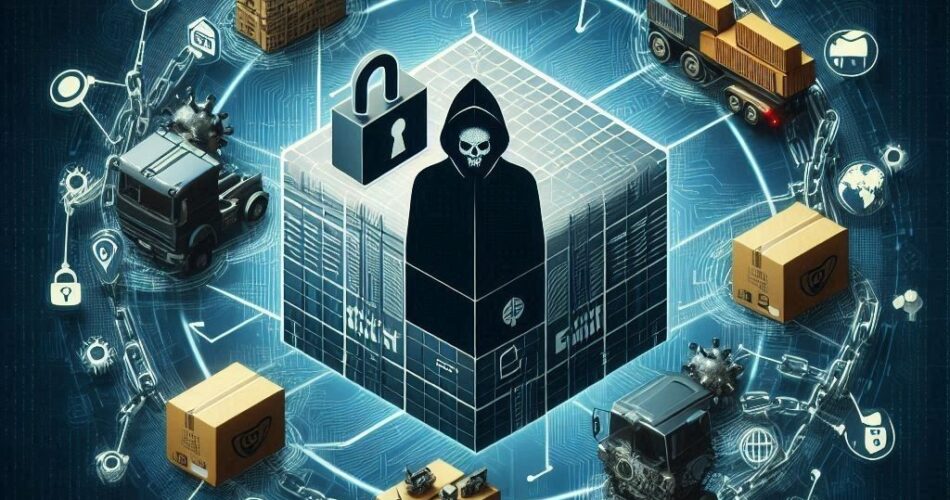Introduction
In today’s interconnected world, businesses rely heavily on third-party vendors, contractors, and service providers to run their operations efficiently. However, this dependency on external suppliers creates vulnerabilities that cybercriminals are increasingly exploiting through Supply Chain Attacks. These attacks target the weak points in a company’s supply chain, enabling attackers to bypass security defenses and compromise an organization’s systems.
In this blog, we’ll dive into how Supply Chain Attacks work, why they’re becoming more frequent, and what organizations can do to defend against them.
What Are Supply Chain Attacks?
A Supply Chain Attack occurs when cybercriminals infiltrate an organization by targeting its suppliers, partners, or service providers. Instead of attacking the organization directly, they exploit the trust and connections between businesses and their vendors, often gaining access through less secure systems.
How Supply Chain Attacks Work
- Targeting a Third-Party Supplier
- Attackers first identify a supplier, contractor, or service provider with weak security protocols. This could be a software vendor, a cloud service provider, or even a logistics company.
- Injecting Malware or Compromising Software
- The attackers either infect the supplier’s systems with malware or compromise legitimate software updates. When the affected vendor interacts with or provides services to its clients, the malware spreads to the target organization.
- Infiltrating the Target
- Once inside, the attackers can steal sensitive data, introduce ransomware, or manipulate systems for further attacks. These breaches are often hard to detect since they come from trusted partners.
Real-World Example: SolarWinds
One of the most significant supply chain attacks in recent history is the SolarWinds breach of 2020. Cybercriminals compromised a routine software update from SolarWinds, a popular IT management software provider. This allowed them to infiltrate multiple high-profile organizations, including U.S. government agencies and large corporations, undetected for months.
Why Supply Chain Attacks Are Dangerous
1. Indirect Access
Supply chain attacks allow cybercriminals to bypass traditional security defenses by entering through trusted third-party vendors. Once inside, attackers can move laterally across networks and remain undetected for extended periods.
2. Widespread Impact
Since many businesses rely on the same software vendors or service providers, a single supply chain attack can affect numerous organizations across industries. The NotPetya ransomware attack of 2017, which originated from a compromised software update in a Ukrainian tax software, impacted global businesses, causing billions in damages.
3. Hard to Detect
Because the initial breach often occurs outside the organization’s direct control, supply chain attacks can go unnoticed for months. Organizations may be unaware that their systems have been compromised until significant damage has been done.
How to Protect Against Supply Chain Attacks
1. Vet Third-Party Vendors
- Conduct thorough due diligence on all third-party vendors, service providers, and contractors before integrating them into your systems. Ensure they follow strict cybersecurity protocols and regularly audit their security practices.
2. Monitor Vendor Access
- Limit the level of access that third-party vendors have to your systems. Segment your network and restrict access to sensitive areas only to those who absolutely need it. Monitor vendor activities to detect any unusual or suspicious behavior.
3. Patch and Update Systems Regularly
- Ensure all software, whether developed in-house or from a vendor, is updated and patched regularly. Attackers often exploit vulnerabilities in outdated systems to launch supply chain attacks.
4. Use Multi-Factor Authentication (MFA)
- Implement MFA for all users, including third-party vendors. MFA adds an additional layer of security, reducing the likelihood of unauthorized access.
5. Develop an Incident Response Plan
- Prepare for the possibility of a supply chain attack by having a well-defined incident response plan in place. This plan should include steps for identifying, containing, and mitigating the damage caused by an attack.
Future of Supply Chain Attacks
As supply chains become more complex and interconnected, the risk of supply chain attacks will continue to grow. Attackers are constantly evolving their tactics to exploit weaknesses in third-party vendors, making it essential for organizations to adopt stronger security measures. In the coming years, cybersecurity partnerships and information-sharing between businesses, suppliers, and governments will be crucial to preventing and mitigating these threats.
Conclusion
Supply chain attacks are a rapidly growing cybersecurity threat that can have devastating consequences for organizations. By exploiting the vulnerabilities of third-party vendors and service providers, attackers can infiltrate even the most secure systems. To protect against these attacks, businesses must adopt a proactive approach to vendor management, implement stringent security controls, and stay vigilant.
Stay informed about the latest cybersecurity threats and defenses by visiting our blog at bugbountytip.tech.

